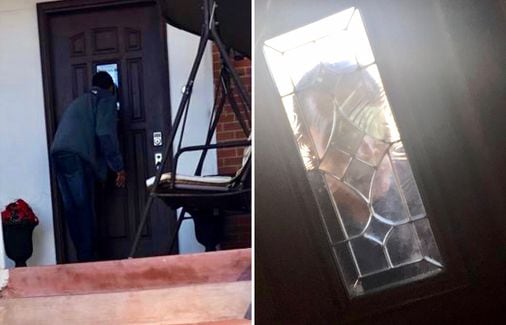
That’s due to an archaic legal standard based on “historical tradition” imposed two years ago by the Supreme Court that has not only stymied efforts by states and the federal government to keep Americans safe from gun violence but also confused policy makers, law enforcement, and, now, even members of the court itself.
Strict adherence to this new standard would have spelled disaster for domestic violence victims. The fact that the court had to all but deviate from its own standard to achieve the result of protecting the abused shows how unworkable the standard is and that it’s time for it to be revisited and revised.
If there were ever an easy case for upholding the application of a gun restriction, it was this one. It involved a federal ban on a specific class of people: those under a court-issued restraining order for domestic violence.
The actions of the defendant in the case, Zackey Rahimi, demonstrate why the ruling should have been a no brainer. His partner sought a restraining order against him when, after a history of abusive behavior, he assaulted her, opened fire in her direction as she fled, and later threatened her if she reported the incident.
Generally speaking, laws abridging enumerated rights such as the right to bear arms in the Second Amendment must pass what is called a strict scrutiny test of constitutionality: The government must prove that the law is narrowly tailored to serve a compelling interest. In this case it is clear that there is an abundantly compelling government interest in protecting people from a threat that led to a court order of protection.
But in 2022 the court traded that standard for one tethered to an 18th-century understanding of what the right to bear arms meant. In a nutshell, in order for a gun restriction to be held constitutional, there needs to be a historical analogy to that law to “demonstrate that the regulation is consistent with the Nation’s historical tradition.”
Those are the words of Justice Clarence Thomas in the 2022 ruling in New York State Rifle & Pistol Assn., Inc. v. Bruen. Since then, lawmakers, courts and members of the public have often been at a loss to understand how to apply standards from a time of single-shot muskets to the modern age of rapid-fire assault weapons and ever advancing firearm technology and availability.
This new standard could have spelled disaster for last week’s ruling, given that at the time of the Second Amendment’s ratification, spousal abuse was not widely criminalized nor even the subject of civil penalty, let alone the basis of disarmament.
But Chief Justice John Roberts, writing for the majority, managed to stretch the bounds of that test just enough to avoid a nonsensical outcome, given that women at that time were denied not only the right not to be abused but also to own property, vote, or in many states seek a divorce.
Roberts held that the historical analogy to a gun regulation need not “precisely match its historical precursors.” Laws designed to keep guns from dangerous people who engaged in unlawfulness at the time, he reasoned, were enough.
It would not have been enough for Thomas, author of the Bruen decision, who dissented in Rahimi.
And Roberts’s strained expansion of Thomas’s rule isn’t enough to end the confusion Bruen has caused.
“We must remember that legislatures, seeking to implement meaningful reform for their constituents while simultaneously respecting the Second Amendment, are hobbled without a clear, workable test for assessing the constitutionality of their proposals,” Justice Ketanji Brown Jackson wrote in a concurrence. “And courts, which are currently at sea when it comes to evaluating firearms legislation, need a solid anchor for grounding their constitutional pronouncements. The public, too, deserves clarity when this Court interprets our Constitution.”
This decision offers none of that.
It is time for the court to revisit and correct its mistake. Our nation cannot advance if it is tethered to the past.
Editorials represent the views of the Boston Globe Editorial Board. Follow us @GlobeOpinion.








